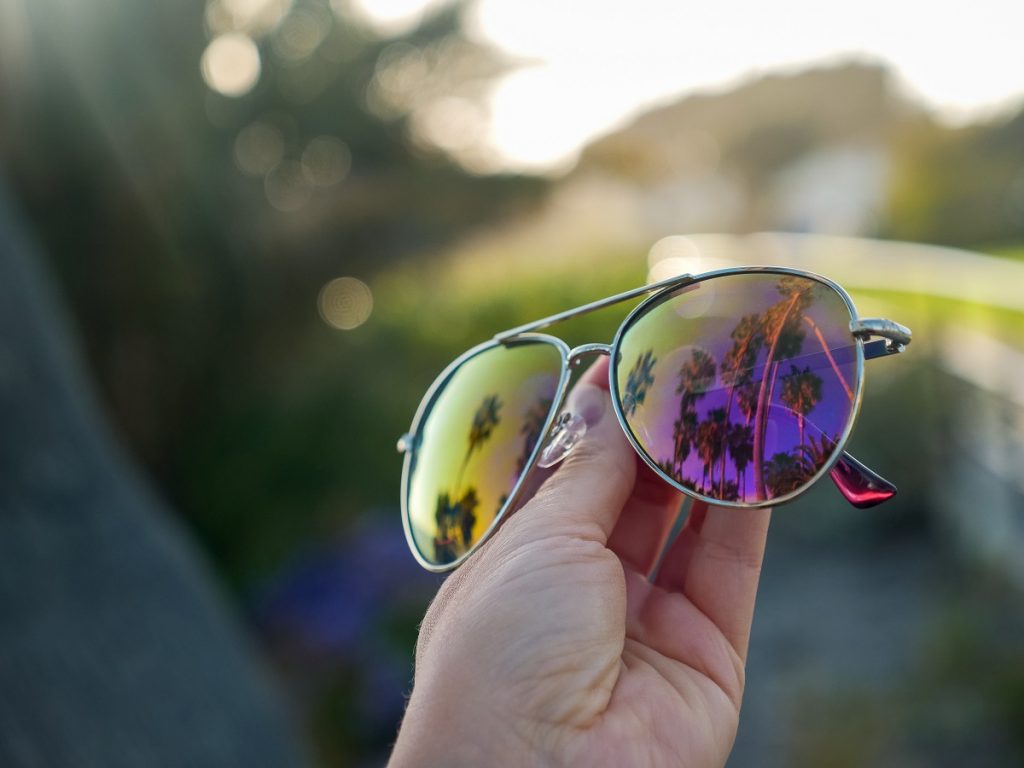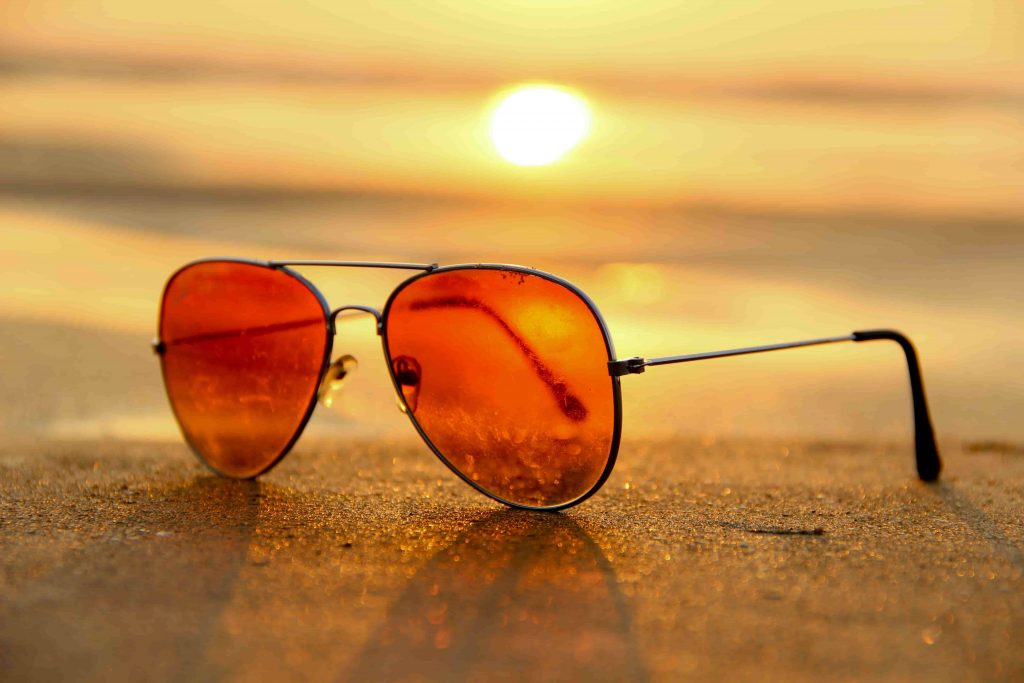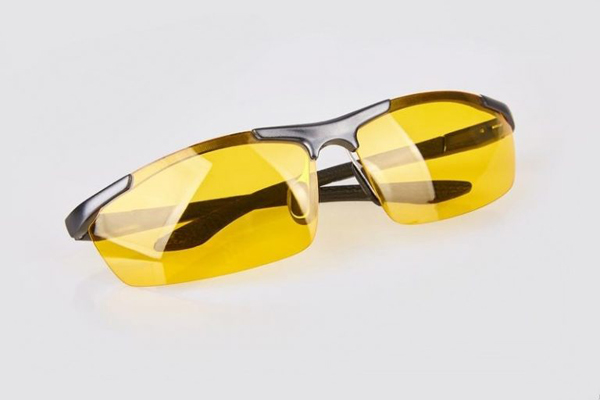Vision correction is getting better by the day. Technology is showing us that even the world of vision correction is evolving by curating gas-permeable contact lenses. About a decade or two ago, you might have thought that you had seen it all when hard contact lenses were ruling the day. However, after some time, you realize that they could do more harm than good to your vision due to one feature – they were unbreathable.

You might ask, “What are contact lenses made of?” Unlike the old-fashioned hard lenses which are made of polymethyl methacrylate (PMMA), rigid gas-permeable contact lenses are made of silicon-containing compounds. Hence, you have a softer, oxygen-breathable contact pair of lenses that doesn’t feel like solid plastic in your eyes, unlike the old-fashioned ones. This makes RGP contact lenses healthier for your eyes than PMMA contact lenses.
While RGP lenses have been around since the 1970s, modern technology has made them a better vision correction solution. Traditional lenses are made of a harder material that allows little to no air through them. Besides, they are bigger and could cause a little discomfort.
This guide features so much more about these types of contact lenses, what’s best for you, and how to take out hard contact lenses. So stick around as we get to the details!
Advantages of Gas Permeable Lenses
One major advantage of RGP contact lenses is their ability to allow air circulation. This means that they don’t provide a breeding ground for bacteria or trap dust or moisture in them like traditional lenses. Oxygen supply is what the outer layer of the eye, the cornea, needs to remain healthy. Lack of this property may make wearing contact lenses uncomfortable and less of a vision correction solution.
Secondly, rigid gas-permeable contacts are made of a softer material that provides more comfort to the eye. The traditional contact lens is made of hard plastic which doesn’t exactly fit the eye. The size of the contact lens was intentionally not meant to fit the eye so it could allow some room for tears to wash through it. This, especially created discomfort and could make them bulge in case the wearer is involved in hard physical activities like sports.
Besides, this didn’t allow the pumping of enough tears under them because of their limited movement with blinks. However, since rigid gas-permeable contact lenses are breathable, they are designed to fit the eye, and perfectly so!
The Drawbacks of GP Contact Lenses
A few weeks after taking out RGP lenses, you will realize that they may not be so great at comfort. Wearing them will always remind you all day that there’s something odd in your eye. This warmup period will require frequent usage of these lenses so that the eye can adapt.
Besides, soft contacts are preferred for their cost-effectiveness. Gas-permeable lenses are often branded as high-maintenance because they are customized to your needs. Besides, you might pay more if you need bifocal or multifocal lenses. Hence your immediate question might be, “How much do rigid gas-permeable contact lenses cost?” Their price ranges from $70 to $190 for a pair. This is the price you need for annual replacements.
RGP Contact Lenses: Features and Popularity
One impressive feature of RGP lenses is their material. The cornea is one sensitive part of the eye that requires a constant oxygen supply. RGP, made of breathable material, serves this function, providing safety from bacteria and dust for your eyes. Besides, rigid gas-permeable contact lenses are an excellent solution for refractive errors and astigmatism.
Another interesting feature of RGP lenses is their movement and size. Compared to soft lenses, RGP lenses are smaller, therefore, cover a smaller part of the cornea. This aspect is important in the movement of the lens at every single blink. Moreover, this feature allows for oxygen-containing tears to pump through the lenses. Hence, the cornea gets enough oxygen supply it needs to remain healthy as the tears also wash off any dust to leave the lens clearer.
Below is a table comparing rigid gas-permeable contact lenses vs soft contact lenses.
| RGP contact lenses | Soft contact lenses |
| Made of silicon, oxygen-breathable material | Made of PMMA, hard impermeable material |
| Allows tear circulation to the cornea | Allows little to no tear circulation to the cornea |
| Provides an accurate solution for astigmatism | May not be very effective for astigmatism |
| Not susceptible to dry eye due to constant oxygen-containing tear circulation | May cause dry eye due to lack of tear and oxygen circulation |
| Lens material is hard to rip or tear | Lens material may break easily |
| Expensive at first but affordable in the long run | Affordable at first but expensive in the long run |
| Smaller but customized size | Bigger but may not be a perfect fit |
| More movements with blinks | Little to no movements with blinks |
Caring for RGP Contacts: Insertion, Removal, and Safety Tips
Insertion
- Ensure you’re in a well-lit room with a clear mirror and a clean working surface. If you have a sink instead, ensure it’s clean, plugged, and that it’s covered with a clean towel.
- Ensure your face is dry, without any makeup or moisture before inserting RGP lenses.
- Go ahead to wash your hands and dry them with a clean towel
- Remove the pair of lenses from the casing, one after another. The best RGP contact lens brands will ask you to clean the lenses with water or saline water. Then place one lens on the tip of your index fingertip. Be sure to place it on the center of the fingertip. Also, only use your left hand if you’re left-handed.
- Closely inspect the lens to ensure it’s in the best condition and clear without fluff from a towel or other particles.
- Go ahead to add a drop of wetting solution that the package comes with. Ensure that the drop falls onto the center of the lens.
- If you are right-handed, pull the lower eyelid with your middle finger as the index finger still holds the lens. Use your left hand to pull the upper eyelid and gently place the lens to cover the colored part of your eye.
- Use your eyelid to position the lens perfectly onto the colored part of the eye, in case it slides to the white part of the eye, and repeat the process for the other eye.
- Clean the lens case with saline or whichever detergent that the package comes with before air-drying it on a clean piece of cloth.
Removal
- Prepare your working area, ensuring that the surface is clean, the mirror is clear, and the room is well-lit.
- Get your contact lens case and the cleaning detergent that came with the package. Ensure that the lens case is clean and if not, use the cleaning detergent to rinse it before drying it with a clean towel.
- To ensure that your hands are clean and dry, use your right middle and index fingers to place your eyelid underneath the lower edge of the lenses (if you’re right-handed).
- Use your left fingers to hold the upper eyelid upwards. Then gently move the upper eyelid downward and inward toward the eye to touch the upper edge of the lens.
- Prepare a clean towel or tissue where you can place the contact lens after removal and before cleansing.
- The above insertion and removal tips also apply to gas-permeable colored contact lenses.
Safety Tips
- Be sure to only use the saline or contact lens detergent that the optometrist provides to reduce the chances of developing eye infections.
- Always remember to remove your contact lenses before you sleep, shower, or swim. This could also help reduce the chances of getting a vision-threatening infection.
- Always wear the contact lenses for as long as your eye doctor recommends and not longer.
- Always cleanse your lenses before wearing them, especially when they accidentally fall off.
The best way to care for your contacts is when you store them in a clean, dry case, and follow user directions that are indicated in the package.
RGP Contact Lenses for Eye Health
The idea of contact lenses has been around since the 16th century. However, their development and improvement were gradual and depended on technology to materialize. Up until the 1930s was the first corneal contact lens invented. This was smaller and more comfortable as it only covered the cornea, unlike scleral lenses that covered the whole ocular surface.
However, as these lenses were impermeable, they caused potentially serious clinical effects to the wearers. Hence, in the late 70s through to the 90s, high-end chemists like Norman Gaylord came up with oxygen-permeable rigid materials to address this issue.
Rigid gas permeable contact lenses solution hence became more reliable than other corrective solutions. Their material, spherical shape, and features have made them a better solution for astigmatism. Unlike soft contact lenses that conform to the irregular shape of the cornea, RGP lenses retain their original spherical shape. This gives the wearer a crisper, clearer vision. Hence, it is now possible to correct astigmatism with contact lenses like with glasses.
Choosing Gas Permeable Contacts: Ideal Candidates and Considerations
Persons with severe hyperopia (farsightedness) and myopia (nearsightedness) are recommended to take out RGP contact lenses because of their efficacy. Besides, RGP contact lenses are effective in correcting astigmatism, keratoconus, and presbyopia. According to your doctor’s prescription, you may be required to take out RGP lenses after refractive surgery.
RGP is rigid and spherical, without altering shapes. Hence, they are recommended for their efficacy, enhanced comfort, and visual acuity.
Below are some of the best contact lenses brands:
Bausch and Lomb Inc
Named after one of the key optometrists that invented contact lenses, this is among the largest contact lens manufacturer in the USA and the world. The company was established in 1853 and now offers vision care, surgical services, and ophthalmic pharmaceuticals.
Johnson & Johnson Services Inc
The company was established in 1886 and has its headquarters based in New Jersey, USA. It offers a wide range of vision care products and services such as disposable contact lenses, ophthalmic products, neurovascular, and electrophysiology products.
Cooper Companies Inc
Headquartered in California, USA, the company has been running since 1958. The company facilitates two segments – CooperVision and CooperSurgical. In its VisionCare segment, the company and its subsidiaries manufacture contact lenses and sell them to their national and international market.
Conclusion
So far, we hope that you now get a clear distinction between hard and soft contact lenses, and why you should consider RGP lenses. RGP lenses can rectify a wide range of vision defects, even the more severe ones. Their inability to take the shape of the irregular cornea is what makes them an ideal solution for astigmatism, as well as severe hyperopia and myopia.
While RGP lenses might feel uncomfortable to wear initially, regular usage will feel more comfortable. Besides, you’re better off with oxygen-breathable lenses than having soft lenses that might lead to more serious problems.
Harrel Eye Care suggests prioritizing your eye health and exploring various types of contact lenses to determine the most suitable option for you. Earlier, we discussed scleral contact lenses.







